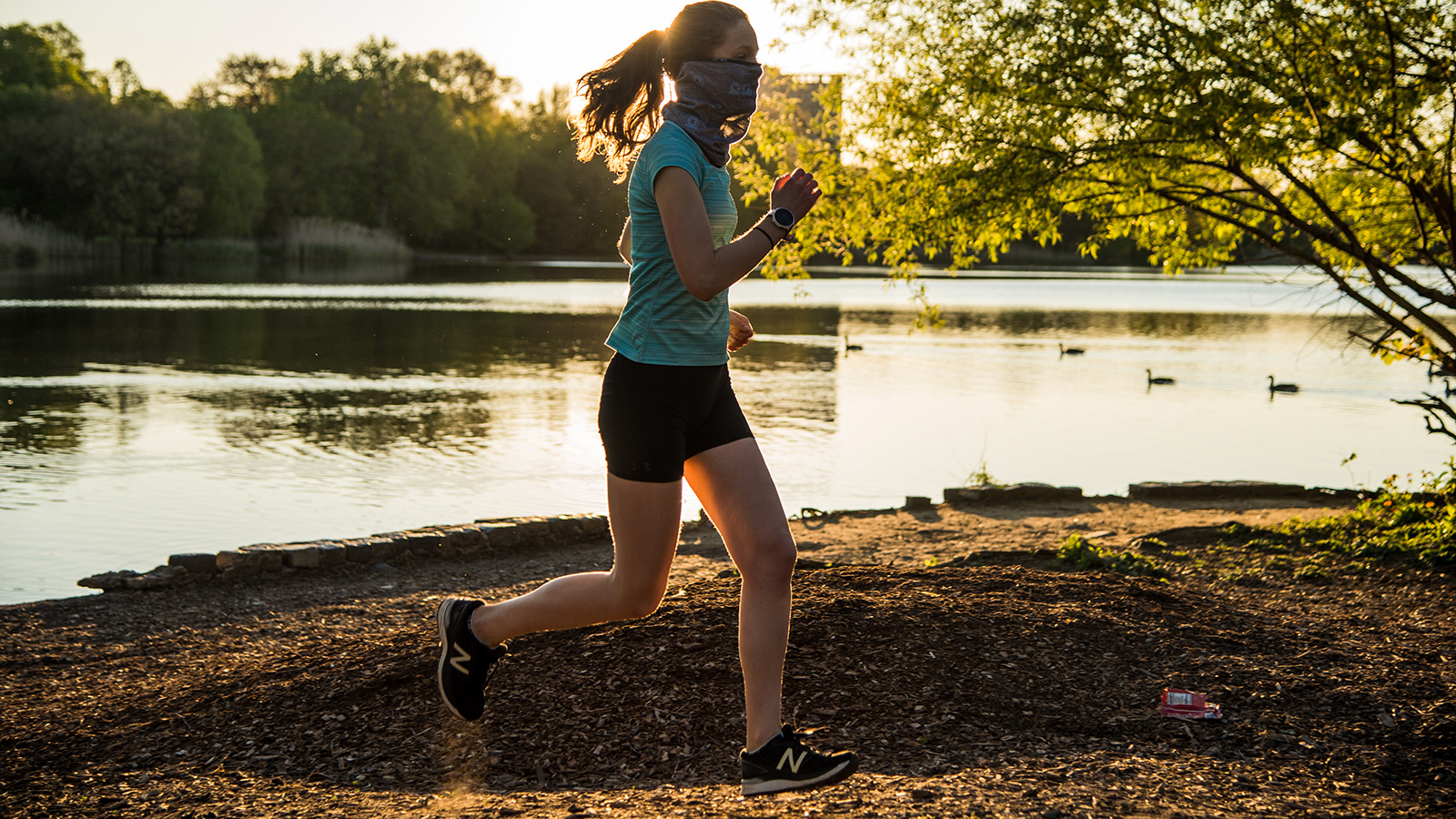Hidratación segura y saludable al aire libre este verano

Summer is just around the corner, and the warmer weather means that runners need to pay close attention to their hydration on outdoor runs.
This year, the coronavirus pandemic introduces additional challenges, as you may not have the same access to drinking fountains and your other hydration sources. The good news is that NYRR coaches and our partners are here to offer tips on how to stay hydrated on your outdoor warm-weather runs.
Why Hydration Is Important
Hydration is essential for running in warm weather. When we run, we sweat, which helps maintain a safe and healthy body temperature. “Sweating is part of the body’s cooling system,” says Leigh-Ann Bramble, PT, DPT, a clinical supervisor at Hospital for Special Surgery. “However, excessive sweating without rehydrating can lead to fluid imbalances in your system. Proper hydration helps you maintain a balance between the fluid you take in and the fluid you sweat out.”
Hydration also maintains blood volume, which allows the heart to pump oxygen-rich blood to the working muscles. Dehydration causes your blood volume to decrease, meaning that less oxygen-rich blood reaches the muscles.

How Much Should You Drink?
The key is to stay hydrated and replace the fluids you lose through sweating. You can learn more about the science of hydration and guidelines for staying hydrated on the run from Poland Spring® Brand 100% Natural Spring Water. You'll find that hydration needs are individualized and depend on factors such as body size, sweat rate, the weather (temperature and humidity), and the intensity of running.
How to Hydrate This Summer
When drinking fountains are not an option for hydration, you’ll need to either carry fluids with you or plan your routes so you can access them along the way. If you’ll be exercising in warm weather for 60 minutes or longer, you’ll need to replace sodium and other electrolytes in addition to water.
“Carrying your own water this summer will ensure that you #runsafe and avoid contact with non-sanitized surfaces,” says NYRR coach Ben Delaney. Here are practical tips you can follow:
• Wear a fuel belt that straps around your waist and holds one or more fluid receptacles
• Carry hand-held fluid bottles
• Use a hydration backpack such as a Camelbak®
If you find carrying your hydration awkward or inconvenient, you need to use other hydration strategies. “A great trick to keep hydrated and not have to carry water is to run a loop course,” suggests Delaney. “This way you can have water bottles or other hydration ready every time you finish a loop.” You can plan to run past your home or other stash spot or arrange to have a friend or family member meet you with fluids every few miles.
A third alternative is to purchase fluids along your route; just be sure that a store or vendor will be open and that you’re able to keep yourself and others safe during the transaction.

Resources
- You can find more warm-weather running tips from HSS’s Bramble here.
- Check out bi-weekly NYRR Facebook Live Coach Chats to get answers to all your training questions.
- Sign up for NYRR Virtual Group Training—the new 10-week session starts June 2.
- Try Gatorade® Thirst Quencher, or Gatorade Endurance for longer runs, to replenish sodium and other electrolytes